Do you have a question about the Buderus Logano G115 WS US/CA and is the answer not in the manual?
Provides information on the safe and proper installation, operation, and maintenance of the boiler.
Explains warning symbols and signal words used in the manual to indicate risk levels.
Lists mandatory codes, regulations, and symbols to follow for safe boiler installation and operation.
Details essential safety guidelines for electrical components and general installation practices.
Outlines critical safety guidelines for the boiler room, including combustion air and fire safety.
Lists typical tools, materials, and accessories required for boiler installation and maintenance.
Provides guidance on the environmentally friendly disposal of trash and heating system components.
Describes the boiler's design for central heating and domestic hot water (DHW) systems in residential and commercial applications.
States that the appliance is tested and certified to meet US and Canadian market rules and regulations.
Emphasizes the installer's responsibility to comply with all applicable federal, state, and local codes.
Highlights the importance of water quality to prevent scale formation and corrosion, referencing further details.
Details the boiler's components: heat exchanger, insulation, jacket, and control panel/aquastat.
Lists the components included in the boiler package, specifying quantities and packaging details.
Provides detailed technical specifications and dimensions for the different Logano G115 WS models.
Presents connection and dimension details in inches for the boiler models.
Explains the importance of maintaining specified operating conditions for boiler reliability and longevity.
Details general operating conditions, including minimum boiler water temperature and return temperature requirements.
Specifies environmental requirements for the boiler room, including temperature, humidity, dust, and fire safety.
Outlines requirements for combustion air supply, including ventilation cross-section and air quality.
Specifies the permissible fuel type (#2 Fuel Oil ASTM D396-05 Type 2) and notes on contamination.
Details power supply requirements, including voltage, circuit breaker, frequency, and enclosure rating.
Covers operating pressure, testing pressure, temperature limitations, and recommended water quality for the system.
Explains how to reduce boiler weight by removing the burner hood and door for easier transportation.
Provides instructions and safety precautions for lifting and carrying the boiler, highlighting grip positions and assistance.
Details how to use transportation aids like a hand truck or trolley to move the boiler safely.
Specifies recommended and minimum wall clearances for boiler installation to ensure accessibility and proper function.
Describes the procedure for reversing the boiler door hinges to open to the left-hand side.
Explains how to mount and adjust the feet to level the boiler and prevent air pockets.
Guides on positioning the boiler in its final location and leveling it horizontally using adjustable feet.
Covers the installation of the flue pipe, including chimney venting and connecting to the system.
Provides instructions for installing the flue pipe, emphasizing safety and proper connection to the chimney.
Guides on connecting the water pipes, including fitting the B-kit components like the relief valve and gauge.
Details the installation of the B-kit, including the safety relief valve and pressure/temperature gauge.
Explains the installation of the boiler drain connection.
Refers to an installation diagram for fitting various heating system components.
Outlines the procedure for filling the heating system and performing leak checks, including pressure testing.
Details the procedure for mounting the correct burner onto the boiler, emphasizing compliance with specifications.
Describes how to connect the fuel supply line, recommending a filter and de-aerator.
Explains the installation of the aquastat for controlling boiler supply temperature.
Provides instructions for fitting a blocked vent switch for Canadian installations.
Covers the electrical connections for boilers using Buderus controls, emphasizing safety.
Details the process of fitting the control panel and its components into the boiler.
Explains how to fit the temperature sensor assembly and route the burner cable.
Guides on establishing a permanent power supply connection and connecting additional components.
Describes how to secure cable runs using provided cable ties.
Details how to position and secure the outer casing panels, including the control device cover and rear boiler cover.
Outlines the steps to bring the heating system up to its normal operating pressure before commissioning.
Details how to check the safety valve's function to ensure it opens and releases pressure correctly.
Explains how to check and ensure heat exchanger baffles are in a horizontal position before commissioning.
Covers the preparatory steps before starting the system, such as opening the fuel supply.
Guides on how to start up the boiler's control system and burner, referencing burner documentation.
Provides important notes and recommendations for commissioning the burner, including performing combustion tests.
Explains how to raise flue gas temperature if it's too low, to prevent condensation risk.
Details how to adjust the position of heat exchanger baffles in pairs to raise flue gas temperature.
Explains how to remove heat exchanger baffles in pairs to raise flue gas temperature.
Describes how to remove the heat exchanger barrier plate to further raise flue gas temperature.
Explains the function of the manual reset high limit and how to check it.
Details how to install the burner door jacket, emphasizing safety.
Provides a log for recording commissioning steps and confirmation of completion.
Explains the normal procedures for shutting down the heating system using controls or an aquastat.
Outlines the procedure for emergency shutdown of the heating system.
Provides guidance on actions to take in an emergency situation, such as a fire.
Explains the reasons for regular heating system maintenance to ensure efficiency, reliability, and longevity.
Details the safety precautions and steps required to prepare the boiler before performing servicing.
Describes methods for cleaning the boiler using brushes or a wet method, including safety precautions.
Provides a step-by-step guide for cleaning the boiler components using brushes.
Explains the process for wet cleaning the boiler using appropriate cleaning agents.
Details how to check the heating system's operating pressure and what actions to take if it's too low.
Describes the procedure for testing the pressure relief valve at regular intervals to ensure proper function.
Presents a log format for recording completed servicing operations and their results.
Provides guidance on troubleshooting and correcting burner faults, including safety warnings about resets.
Lists the part numbers for the boiler block and burner door components.
Lists the part numbers for the boiler jacket and its associated outer panel components.
Shows the wiring diagram for Riello F3 or F5 series oil burners using a Honeywell Aquastat.
Illustrates the wiring schematic for Carlin EZ-1 HP burners with a L7248C Aquastat.
Provides the circuit diagram for Becket NX burner wiring with a L7248C1006 Aquastat.
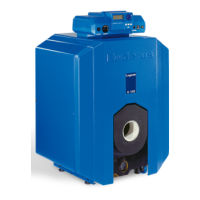

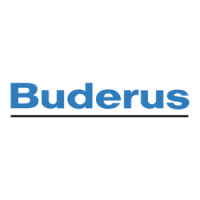


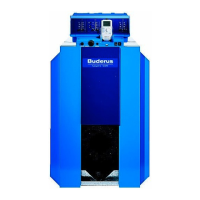
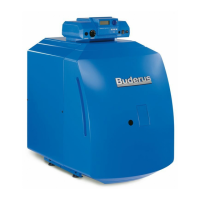

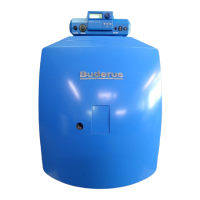
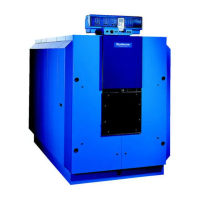
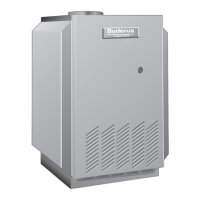
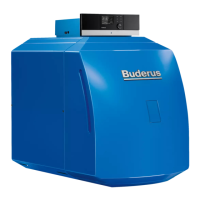
